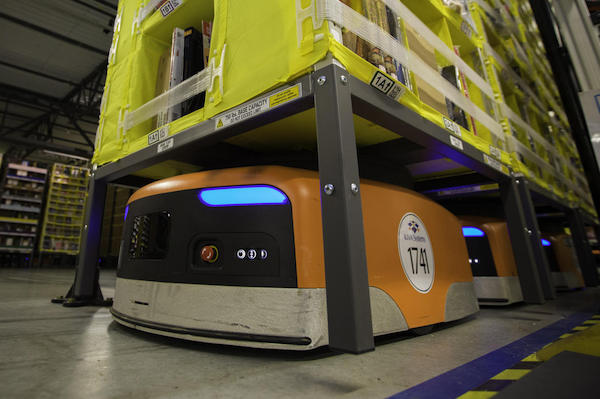Cyber Monday is a major business story because it is the biggest online shopping day of the year. As a result, many news outlets sent reporters to one of the 13 Amazon “fulfillment centers” around the country where consumer orders are processed, filled and shipped. The sight of items zooming by on speedy conveyor belts makes for good visuals.
The backbone of Amazon’s increasingly automated processing is the Kiva robot system, the foot-high wheeled gizmos that bring shelves of products to human packers, who are still needed to place the ordered merchandise into boxes. The company recently doubled the number of Kiva-bots [1] from 15,000 to 30,000 in preparation for the Christmas shopping season.

The super-fast conveyor belts of stuff may create zippy television, but the robots make that speed possible:
Now for a Cyber Monday report — one of many [2]!
Jo-Ling Kent of Fox Business reported from the Amazon processing center in Robbinsville NJ which occupies one million square feet (28 football fields!), has 14 miles of conveyor belts, employs 4000 full-time workers and processed 500 orders per second last year and expects to do better today.
The remarkable success of the world’s top automated store — where shoppers buy online and their purchases are hardly touched by human hands — shows how rapidly the retail world is moving away from brick and mortar. The pattern is recurring through many industries, where fewer human workers are needed to perform the workplace tasks.
The technological advances may look fine individually, but the cumulative effect of automation on employment is bad [3] and getting worse. The Gartner tech consulting firm forecasts that one-third of jobs will have become automated by 2025 [4]. In 2013, two Oxford University researchers predicted that nearly half of US jobs are vulnerable to automation [5] within 20 years. And millions of the jobs lost during the recession aren’t coming back [6] because business turned to smart machines to survive.
For sure, America doesn’t need to continue admitting immigrant workers when the jobs universe is shrinking away.